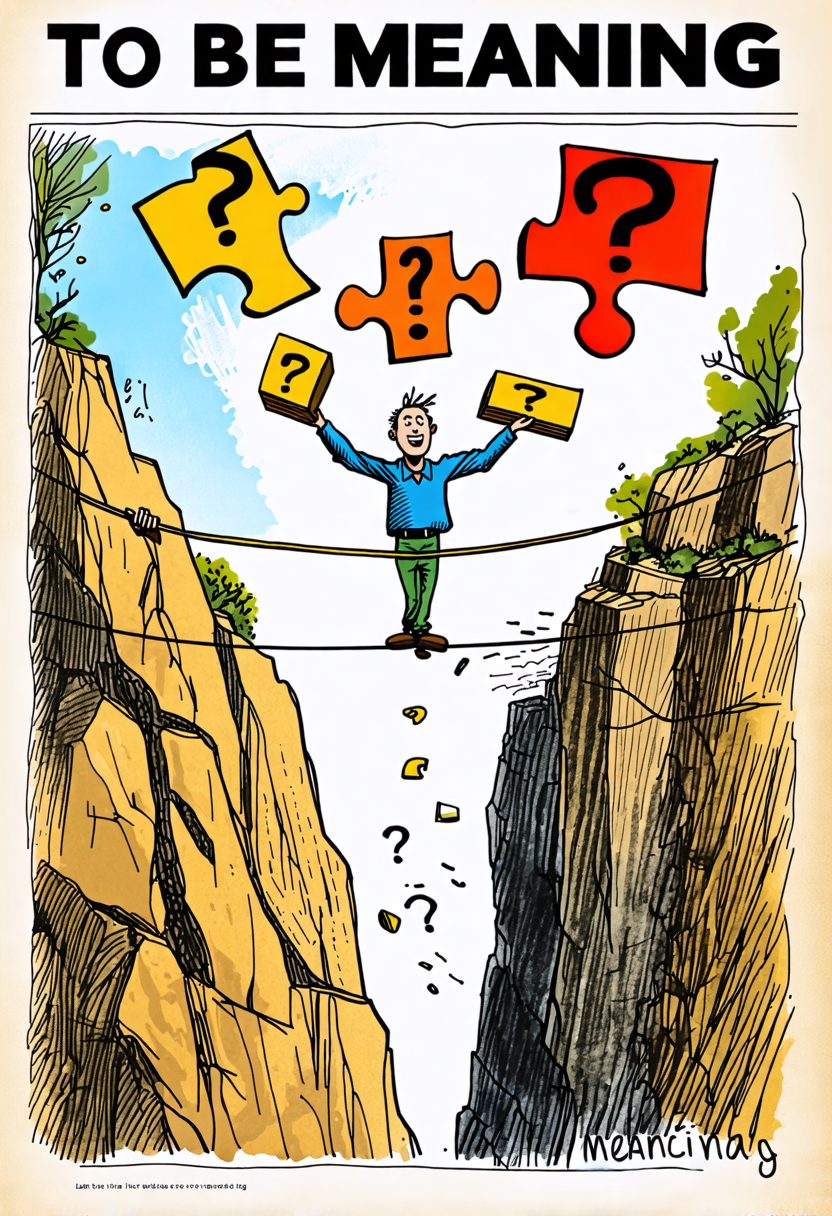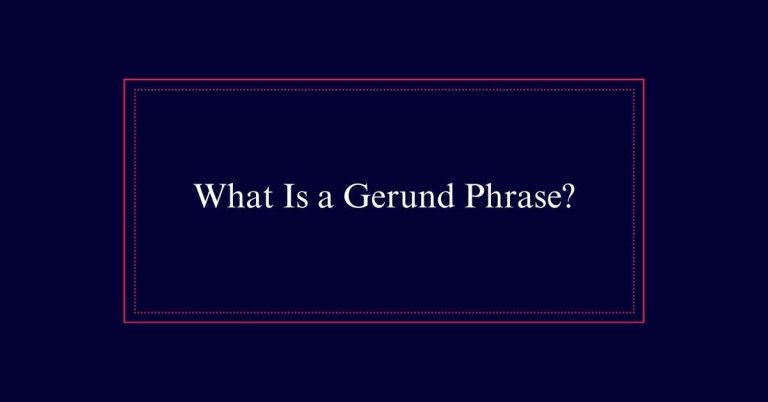“To Be” Meaning With Examples
The verb “to be” is essential in English, functioning as both an auxiliary and linking verb. As a linking verb, it connects the subject to a complement, such as in “She is a teacher.” As an auxiliary verb, it helps form continuous tenses, like “They are running.”
It changes form based on the subject, ensuring subject-verb agreement. For instance, “I am,” “you are,” “he is,” “we were.” Understanding its roles enhances sentence clarity. Examples include “I am happy,” “He was tired,” and “They are studying.”
Types of To Be Verbs
The verb ‘to be’ manifests in various forms, primarily as auxiliary and linking verbs.
As a linking verb, ‘to be’ connects the subject to a subject complement, providing more information about the subject. For example, in the sentence ‘She is a teacher,’ the verb ‘is’ links ‘she’ to ‘teacher.’
The verb ‘to be’ changes form depending on the subject’s person and number, such as ‘am,’ ‘is,’ ‘are,’ ‘was,’ and ‘were.’ It is essential for subject-verb agreement in sentences. For instance, ‘He is’ versus ‘They are.’
Additionally, ‘to be’ is used to form both present and past continuous tenses, like ‘I am running’ and ‘They were singing.’
Auxiliary Verbs
Besides serving as a linking verb, ‘to be’ also functions as an auxiliary verb in forming various tenses. As an auxiliary verb, ‘to be’ helps create continuous and perfect tenses.
For instance, in the present continuous tense, ‘to be’ combines with the present participle, such as ‘I am running.’ In the past continuous tense, it appears as ‘was’ or ‘were,’ like ‘She was reading.’ In future continuous, it forms ‘will be’ plus a present participle, e.g., ‘They will be arriving.’
Additionally, ‘to be’ is used in perfect tenses with forms like ‘has been’ or ‘had been,’ for example, ‘He has been working.’
Linking Verbs
Linking verbs connect the subject of a sentence to additional information about that subject. These verbs do not show action but instead link the subject with a noun or adjective that describes it.
The most common linking verb is ‘to be,’ appearing in various forms, such as ‘am,’ ‘is,’ ‘are,’ ‘was,’ and ‘were.’ For example, in the sentence ‘She is a teacher,’ the verb ‘is’ links ‘she’ (the subject) to ‘a teacher’ (additional information). Linking verbs help provide clarity by describing the subject’s state or identity.
Other linking verbs include ‘seem,’ ‘become,’ and ‘appear.’ They serve a similar purpose, connecting the subject with more information about its condition or status.
Verb Conjugation
Understanding verb conjugation is essential for mastering the different forms of the verb ‘to be.’ This verb changes based on the subject’s person and number. In the present tense, it appears as ‘am,’ ‘is,’ and ‘are.’ For example, ‘I am,’ ‘he is,’ and ‘they are.’
In the past tense, it changes to ‘was’ and ‘were.’ For instance, ‘She was’ and ‘we were.’ The verb ‘to be’ also appears in perfect tenses with ‘have’ and ‘been,’ such as ‘I have been’ and ‘they had been.’
Proper conjugation ensures subject-verb agreement, which is important for grammatical accuracy.

Continuous Tenses
Building on our understanding of verb conjugation, we now explore the use of the verb ‘to be’ in continuous tenses. Continuous tenses convey ongoing actions and require the verb ‘to be’ followed by a present participle (verb ending in -ing). These tenses include present continuous, past continuous, and future continuous.
| Tense | Example | Structure |
|---|---|---|
| Present Continuous | She is reading a book. | [Subject] + am/is/are + [Verb]-ing |
| Past Continuous | They were playing soccer. | [Subject] + was/were + [Verb]-ing |
| Future Continuous | I will be traveling tomorrow. | [Subject] + will be + [Verb]-ing |
| Negative Form | He is not eating dinner. | [Subject] + am/is/are not + [Verb]-ing |
| Question Form | Are you studying now? | Am/Is/Are + [Subject] + [Verb]-ing |
Present Participle Usage
The present participle, formed by adding -ing to a verb, is pivotal in constructing continuous tenses. It helps convey ongoing actions in the present, past, and future.
For example, in the sentence ‘I am reading,’ ‘reading’ is the present participle, used with the verb ‘am’ to indicate an action happening now. Similarly, ‘was reading’ shows an action that was ongoing in the past.
In the future continuous tense, the structure is ‘will be’ plus the present participle, as in ‘will be reading.’ This form highlights actions that will be ongoing at a future time.
Past Participle in Perfect Tenses
In the perfect tenses, the past participle is used with forms of the verb ‘have’ to indicate completed actions. This structure helps express actions that were finished at some point in the past, present, or future. For example, in the sentence “I have been tired,” ‘have’ combines with the past participle ‘been’ to convey a completed state. Here is a table to illustrate how this works in different perfect tenses:
| Tense | Example Sentence | Explanation |
|---|---|---|
| Present Perfect | I have been happy. | Action completed in the present. |
| Past Perfect | I had been happy. | Action completed before a past event. |
| Future Perfect | I will have been happy. | Action completed before a future time. |
Grammar Rules for To Be
Understanding how past participles function in perfect tenses lays the groundwork for mastering the grammar rules that govern the verb ‘to be’. Subject-verb agreement is essential.
For instance, ‘he is’ versus ‘they are’. Regular verbs change for third-person singular subjects, such as ‘she is’ or ‘it is. The usage of ‘there is’ and ‘there are’ depends on singular or plural subjects.
In negative sentences, ‘not’ follows the verb, as in ‘is not’ or ‘are not’. Questions with ‘to be’ invert the subject and verb, such as ‘Is he?’ or ‘Are they?’. Proper understanding of these rules ensures accurate and effective communication in English.
Examples in Sentences
Examples of the verb ‘to be’ illustrate its usage across various tenses and sentence structures. In the present tense, we say, ‘She is happy.’
For the past tense, ‘He was tired.’
The present perfect tense uses ‘have’ or ‘has’ plus the past participle: ‘They have been busy.
The past perfect tense is similar: ‘I had been ready.’
In the present continuous tense, we use ‘am/is/are’ plus the present participle: ‘She is running.’
For the past continuous tense, ‘was/were’ plus the present participle is used: ‘They were eating.’
Modal verbs with ‘to be’ include sentences like, ‘She will be late.’
Questions and negatives also use ‘to be’: ‘Is he coming?’ and ‘They are not here.’
Common Questions
Many learners have common questions about the various uses and rules of the verb ‘to be’. Here are some frequently asked questions to clarify these points:
| Question | Answer |
|---|---|
| What is the verb ‘to be’? | It is a linking verb that connects the subject to a state or description. |
| How do you form questions with ‘to be’? | Place the verb ‘to be’ before the subject. |
| How do you form negatives with ‘to be’? | Add ‘not’ after the verb ‘to be’. |
| What is subject-verb agreement? | Make sure the verb matches the subject in number and person. |
| How is ‘to be’ used in different tenses? | It forms present, past, and future continuous tenses. |







